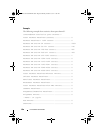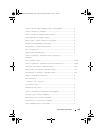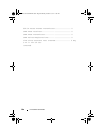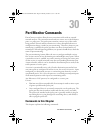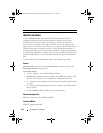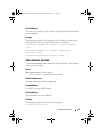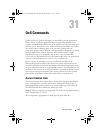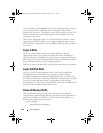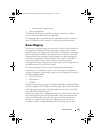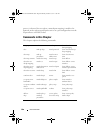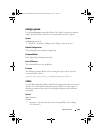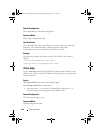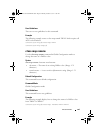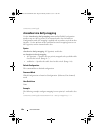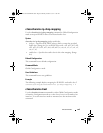
646 QoS Commands
A user configures an ACL permit rule to force its matching traffic stream to a
specific egress interface, bypassing any forwarding decision normally
performed by the device. The interface can be a physical port or a LAG. The
redirect interface rule action is independent of, but compatible with, the
assign queue rule action.
ACLs can be configured to apply to a VLAN instead of an interface. Traffic
tagged with a VLAN ID (either receive-tagged or tagged by ingress process
such as PVID) is evaluated for a match regardless of the interface on which it
is received.
Layer 2 ACLs
The Layer 2 ACL feature provides access list capability by allowing
classification on the Layer 2 header of an Ethernet frame, including the
802.1Q VLAN tag(s). In addition, the rule action set is enhanced to designate
which (egress) CoS queue should handle the traffic, and whether the traffic
flow is to be redirected to a specific outgoing interface.
MAC access lists are identified by a user-specified name instead of a number.
Layer 3/4 IPv4 ACLs
The Layer 3/4 ACL feature supports IP access lists, both standard and
extended. These lists check the Layer 3 portion of a packet, looking
specifically at information contained in the IP header and, in certain cases,
the TCP or UDP header. An Ethertype of 0x0800 is assumed in the case of IP
access lists. Permit and deny actions are supported for each ACL rule.
Standard layer 3/4 ACLs can be classified based on the source IP address and
netmask or other extended classification criteria.
Class of Service (CoS)
The PowerConnect CoS Queueing feature allows the user to directly
configure device queueing and, therefore, provide the desired QoS behavior
without the complexities of DiffServ. The CoS feature allows the user to
determine the following queue behavior:
•Queue Mapping
– Trusted Port Queue Mapping
2CSPC4.XCT-SWUM2XX1.book Page 646 Monday, October 3, 2011 11:05 AM



